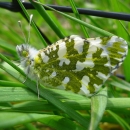What We Do
We work with communities and partners across Georgia and the southeast to support conservation through:
Endangered Species Listing & Recovery
Our office coordinates and supports the recovery of federally threatened and endangered species, and species being considered for Endangered Species Act protection. We support research and active propagation efforts that support conservation and management of federally listed species. We also compile and analyze data needed to inform decisions on species listing and classification. Learn more at our Projects and Research page.
Project Planning & Review
We work closely with other federal agencies to reduce or avoid impacts to plants, fish, and wildlife from projects they fund or authorize. A few project examples include road construction and maintenance (Federal Highway Administration), logging on national forests (U.S. Forest Service), and reservoir management (U.S. Army Corps of Engineers). See our Project Planning & Review page for more detailed information.
Habitat Restoration & Management
Our Partners for Fish and Wildlife Program works with private landowners to restore longleaf pine forest, stream, and riparian riparian
Definition of riparian habitat or riparian areas.
Learn more about riparian habitats that are home to endangered, threatened, and rare species. Projects can include implementing prescribed fire programs, identifying and eliminating sources of sediment and pollution, removing aquatic passage barriers such as derelict dams and crossing structures, and working to enhance plant, fish, and wildlife habitat on their land. Learn more at our Projects and Research page.
Management and Conservation
Visit Project Planning & Review for detailed step-by-step guidance on how to submit projects for review and to learn about conservation measures.
Our Projects and Research
Our team supports conservation efforts at multiple scales, from on-the-ground species monitoring and habitat restoration to broader landscape-level planning.
Learn more about our efforts.





